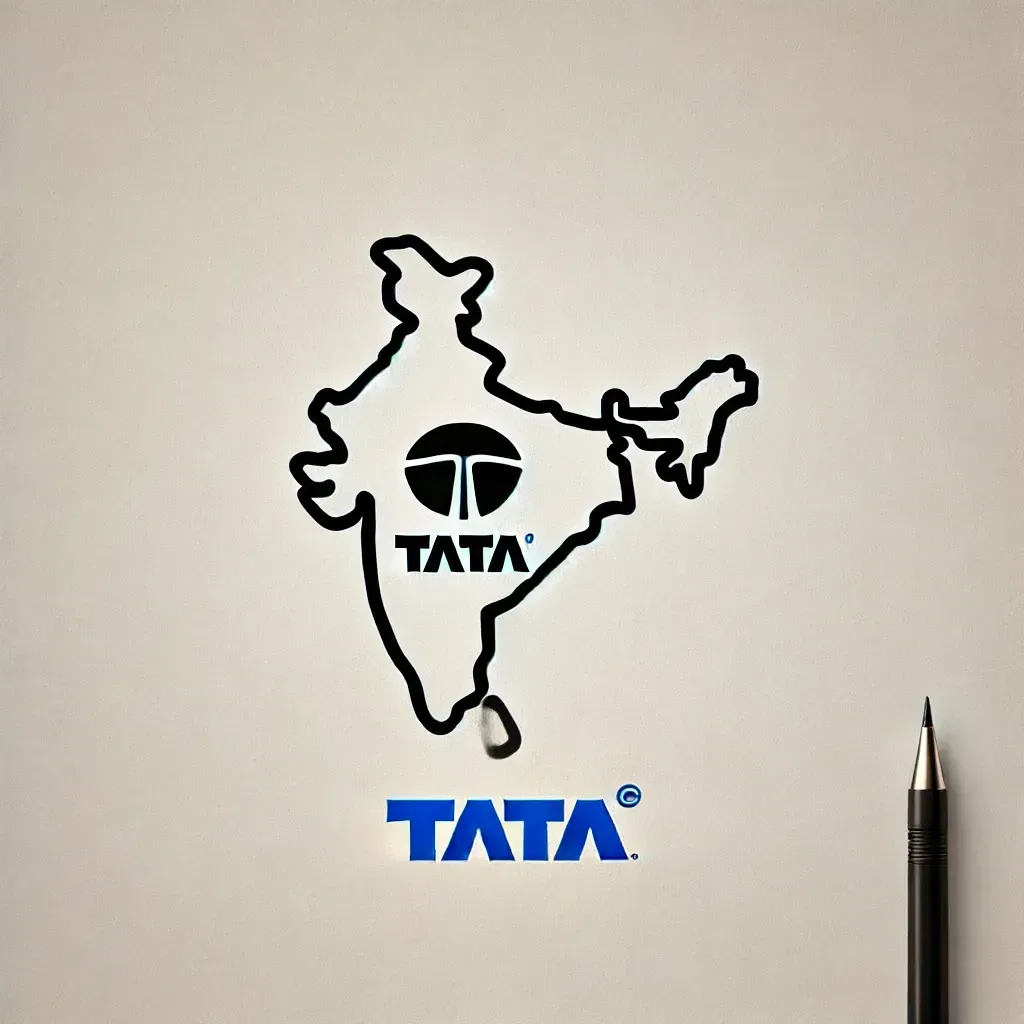Jamsetji Tata, often hailed as the "Father of Indian Industry," was a visionary who laid the foundation for what would become one of the world's largest conglomerates, the Tata Group. Born in 1839 in Navsari, Gujarat, Jamsetji was destined for greatness from an early age. He was the son of Nusserwanji Tata, a small-time trader who eventually moved to Bombay (now Mumbai) to seek better opportunities. Jamsetji's early education at Elphinstone College in Bombay exposed him to Western ideas and innovations, sparking his interest in industrialization.
Jamsetji Tata's entrepreneurial journey began with modest trading ventures, but he quickly recognized the potential of the cotton industry during the American Civil War, which disrupted global cotton supply chains. His first major business success came when he bought a bankrupt oil mill, converted it into a cotton mill, and sold it for a profit. This success fueled his ambition to create a world-class industrial enterprise in India.
Throughout his career, Jamsetji was driven by a deep sense of patriotism and a desire to see India prosper. He envisioned a self-reliant nation with advanced infrastructure, modern industries, and social welfare for its people. His legacy is not just in the companies he founded, but in the enduring principles of innovation, integrity, and social responsibility that continue to guide the Tata Group today.
The Cotton Revolution in India
The Cotton Revolution in India was a transformative period that reshaped the nation's economic landscape. In the mid-19th century, India was under British colonial rule, and the cotton industry emerged as a pivotal sector. The American Civil War (1861-1865) played a crucial role in this transformation. With the disruption of cotton supplies from the American South, the British turned their attention to India, which had the fertile land and favorable conditions to grow cotton.
Before the Civil War, India contributed a modest 31% to British cotton imports. However, as American cotton exports dwindled, India's share surged to a staggering 90% by 1862. This marked the beginning of India's Cotton Revolution. The sudden spike in demand led to a rapid expansion of cotton cultivation and trade. Indian farmers and traders seized the opportunity, transforming cotton into a highly lucrative commodity.
This boom, however, highlighted the need for a more organized and efficient cotton industry. The existing mills in Bombay (now Mumbai) were primitive, with outdated machinery and inadequate infrastructure. This is where Jamsetji Tata saw a significant opportunity. He recognized that India had the potential to become a major player in the global cotton market, provided it could modernize its production and processing capabilities.
The Cotton Revolution not only boosted India's economy but also laid the groundwork for industrialization. It underscored the importance of modern infrastructure, technology, and strategic planning—principles that Jamsetji Tata would later apply to his ventures, shaping the future of Indian industry.
Jamsetji Tata's Early Ventures
Jamsetji Tata's journey into the business world began with a keen observation of the cotton industry's dynamics during the American Civil War. His father, Nusserwanji Tata, was a trader, and young Jamsetji initially assisted him, gaining valuable insights into the trade. In 1869, Jamsetji took a bold step by purchasing a bankrupt oil mill in Chinchpokli, Mumbai. He converted it into a cotton mill and, within two years, sold it for a profit. This venture was his first major success and a crucial learning experience.
Understanding the importance of thorough market research, Jamsetji embarked on a trip to England to study the cotton industry. He recognized that Western countries were far ahead of India in terms of technology and industrial practices. His travels took him to key business hubs like Egypt, Syria, Palestine, Turkey, and Russia. Everywhere he went, he meticulously noted down observations about the local business ecosystems.
These experiences were eye-opening. Jamsetji realized that India had the natural resources, labor force, and strategic ports needed to excel in the cotton industry. What was lacking, however, was modern machinery and efficient industrial processes. Armed with this knowledge, he returned to India with a clear vision: to establish a world-class cotton mill that could compete on the global stage.
Jamsetji's early ventures were marked by a combination of bold risk-taking and careful planning. He understood that success in business required not just capital and resources, but also a deep understanding of market trends, technological advancements, and efficient management practices. These principles guided his future endeavors, ultimately leading to the creation of the Tata Group.
Importance of Market Research
Jamsetji Tata's success was built on the bedrock of meticulous market research. Understanding that knowledge was power, he dedicated significant time and resources to studying global market trends and advancements. His travels across Europe and the Middle East were not just tours but comprehensive studies of industrial practices and economic conditions.
In the 19th century, Western nations were leading the Industrial Revolution, and Jamsetji recognized the vast technological gap between the East and the West. During his visits to England, Egypt, Syria, Palestine, Turkey, and Russia, he closely examined the cotton industry and the broader economic landscape. He documented his observations in detail, understanding the importance of advanced machinery, efficient processes, and organized business structures.
This extensive market research revealed that India had all the natural advantages necessary to become a leader in the cotton industry: fertile land, abundant labor, and strategic seaports. However, these resources were underutilized due to outdated practices and lack of modern infrastructure.
Jamsetji's strategic insights were ahead of his time. He realized that to build a successful enterprise, one needed to adopt the best practices from around the world. His market research laid the groundwork for establishing the Empress Mills in Nagpur, equipped with the latest technology and innovative management practices. This emphasis on understanding and adapting to market conditions became a cornerstone of the Tata Group's enduring success.
Choosing Nagpur for the Cotton Mill
Jamsetji Tata's decision to establish a cotton mill in Nagpur was both bold and strategic, demonstrating his visionary thinking. At a time when most industrialists preferred the bustling city of Bombay (now Mumbai) due to its proximity to the port, Jamsetji chose the relatively remote town of Nagpur, 800 kilometers away. This choice initially drew skepticism and even ridicule from financiers and fellow traders.
Nagpur, however, offered several unique advantages that Jamsetji astutely identified. Firstly, it was located in a prime cotton-producing region, ensuring a steady and nearby supply of raw materials. This reduced transportation costs and ensured that the mill would have continuous access to the best quality cotton.
Secondly, Nagpur was at the heart of a growing railway network. Jamsetji understood the transformative potential of railways, having seen their impact on trade and industry during his travels in Europe. He knew that railways could efficiently connect Nagpur to major ports and markets, facilitating the swift movement of goods.
Additionally, Nagpur was close to coal supplies from the Baroda mines, providing an essential energy source for the mill's operations. The town also had a significant handloom industry, offering a skilled labor force familiar with textile work.
Overcoming Challenges in Worker Management
Establishing the Empress Mills in Nagpur brought not only logistical hurdles but also significant challenges in managing the workforce. Unlike the industrial culture of Bombay, Nagpur's labor force was unfamiliar with factory work's demands and discipline. Workers frequently took leaves for minor reasons, resulting in the mill operating at only 80% capacity.
Jamsetji Tata's approach to solving this problem was innovative and humane. Instead of adopting the harsh tactics common in the industrial world at the time—such as punitive measures or a hire-and-fire strategy—he chose to foster loyalty and improve worker welfare. His goal was to build a motivated and committed workforce, essential for the mill's long-term success.
One of his key initiatives was the introduction of a provident fund scheme, a pioneering move in India at the time. This scheme ensured that workers would have financial security after retirement, providing them with a sense of stability and commitment to the company. Additionally, Jamsetji implemented medical insurance to cover workers' healthcare costs in case of injuries sustained at work, addressing a critical need for worker safety and wellbeing.
Jamsetji also focused on creating a positive work environment by organizing family days, sports events, and various ceremonies where workers and their families were rewarded with gold chains, wristwatches, cash rewards, and other incentives. These events not only boosted morale but also fostered a sense of community and belonging among the workers.
These progressive practices significantly improved attendance and productivity at the Empress Mills. By prioritizing the welfare of his workers, Jamsetji Tata demonstrated that empathy and compassion could drive business success. His management style was ahead of its time, setting a standard for worker treatment and corporate responsibility that continues to influence modern business practices.
Innovations in the Cotton Industry
Jamsetji Tata's commitment to innovation was a driving force behind the success of the Empress Mills and the broader Tata Group. He recognized early on that staying ahead in the competitive cotton industry required continuous improvement and adoption of the latest technologies. His travels to Europe and other industrial hubs were not merely for market research but also to seek out cutting-edge advancements that could be implemented back in India.
One of the most significant innovations introduced by Jamsetji was the use of ring frames in cotton spinning. During a visit to the United States in 1883, his technical expert, James Brooksby, observed the experimental use of ring frames, a technology that promised higher efficiency in spinning cotton. Although this technology was still untested on a large scale, Jamsetji's foresight led him to adopt it at the Empress Mills.
The results were remarkable. While traditional spinning methods achieved around 6,000 revolutions per minute, the ring frames enabled 9,000 to 12,000 revolutions, significantly boosting productivity. This technological leap not only improved the mill's output but also its profitability. The dividends of the company surged to 16%, reflecting the successful integration of this innovation.
Jamsetji's investment in high-quality machinery and his willingness to experiment with new technologies set a precedent for continuous innovation within the Tata Group. This approach ensured that the Empress Mills remained competitive in the global market, even against well-established Western competitors.
Beyond machinery, Jamsetji emphasized research and development. He sent experts to study global trends and advancements, bringing back valuable insights that could be applied to improve the mill's operations. This relentless pursuit of excellence through innovation was a cornerstone of his business strategy.
Founding the Tata Group
The establishment of the Tata Group by Jamsetji Tata was a milestone in India's industrial history. His vision extended far beyond the Empress Mills, as he aimed to create a diversified conglomerate that would drive India's economic growth and industrial self-sufficiency. Jamsetji's strategic foresight and entrepreneurial spirit led to the founding of various enterprises that laid the foundation for the Tata Group.
In 1877, after the success of the Empress Mills, Jamsetji's focus expanded to other sectors. He envisioned ventures that could leverage India's natural resources and strategic advantages. One of his most ambitious projects was the establishment of Tata Steel. Despite facing significant challenges, including resistance from British colonial authorities and skepticism from financiers, Jamsetji remained undeterred. He believed that a steel plant was crucial for India's industrial development, providing the necessary infrastructure for building railways, factories, and other essential services.
Jamsetji also initiated the Swadeshi Mills in 1886, a textile mill that aligned with the Swadeshi movement, promoting the use of Indian-made goods. This move was both a business strategy and a patriotic act, contributing to India's struggle for economic independence.
His ventures into hydroelectric power, through the establishment of the Tata Hydroelectric Power Supply Company in 1910, further demonstrated his innovative approach. By harnessing the power of Western Ghats' waterfalls, Jamsetji aimed to provide Bombay with a reliable and sustainable power source, supporting the city's burgeoning industrial sector.
Jamsetji's commitment to education and research led to the founding of the Indian Institute of Science in Bangalore. He believed that scientific and technical education was vital for India's progress and invested heavily in establishing this premier institution, which continues to be a leading research university in India.
Contributions to India's Industrialization
Jamsetji Tata's contributions to India's industrialization were transformative, marking the beginning of a new era of economic development and self-sufficiency. His vision and initiatives not only established key industries but also laid the groundwork for a modern, industrialized India.
One of Jamsetji's most significant contributions was the founding of Tata Steel, initially called Tata Iron and Steel Company (TISCO), in 1907. This project was monumental, symbolizing India's entry into the heavy industrial sector. Despite numerous obstacles, including British colonial resistance and financial constraints, Jamsetji's unwavering determination ensured the plant's establishment in Jamshedpur. Tata Steel became the first integrated steel plant in Asia and played a crucial role in building India's infrastructure, including railways, bridges, and buildings.
Jamsetji's efforts extended to other sectors as well. He was a pioneer in the Indian textile industry, modernizing it with the latest technology and efficient practices. The success of the Empress Mills and later the Swadeshi Mills demonstrated the potential of Indian industries to compete globally. These mills not only provided employment to thousands but also showcased India's capability to produce high-quality goods.
In addition to his industrial ventures, Jamsetji was deeply committed to improving the quality of life in India. His contributions to education were profound, most notably the establishment of the Indian Institute of Science (IISc) in Bangalore. He believed that scientific and technical education was crucial for the country's progress. The IISc, founded with a generous endowment from Jamsetji, continues to be a premier research institution, contributing to India's advancements in science and technology.
Jamsetji's vision also included harnessing natural resources for sustainable development. His efforts in hydroelectric power, through the Tata Hydroelectric Power Supply Company, helped provide a reliable electricity supply to Bombay, supporting its industrial growth.
Furthermore, Jamsetji's philanthropic activities set a new standard for corporate social responsibility. He believed that industrialization should go hand in hand with social welfare. His initiatives in healthcare, education, and worker welfare demonstrated a holistic approach to development, ensuring that economic progress benefited all sections of society.
Lessons
Jamsetji Tata's journey offers invaluable lessons for aspiring entrepreneurs and business leaders. His principles and strategies remain relevant, highlighting the importance of vision, innovation, market research, and ethical practices in building a successful enterprise.
One of the foremost lessons from Jamsetji Tata's success is the significance of comprehensive market research. Before embarking on his ventures, he spent years studying the global market, understanding technological advancements, and identifying opportunities. His detailed observations during his travels enabled him to make informed decisions, such as adopting advanced machinery and choosing strategic locations for his enterprises. This emphasis on research ensured that his ventures were well-grounded and positioned for success.
Innovation was another cornerstone of Jamsetji's strategy. He was always keen on adopting and experimenting with new technologies, such as the ring frames in cotton spinning. By staying ahead of technological trends, he ensured that his enterprises maintained a competitive edge. His commitment to continuous improvement and adaptation was instrumental in the success of the Empress Mills and other ventures.
Jamsetji's approach to worker management also offers valuable insights. He recognized that a motivated and well-cared-for workforce was crucial for productivity. His initiatives, such as provident funds, medical insurance, and employee welfare programs, fostered loyalty and improved morale. This humane approach not only resolved labor issues but also enhanced operational efficiency, setting a standard for modern human resource practices.
Another critical lesson from Jamsetji's life is the importance of long-term vision and strategic thinking. His decision to establish Tata Steel, despite the immense challenges, was driven by his belief in India's potential for industrial growth. His investments in education and research institutions, like the Indian Institute of Science, were aimed at nurturing future generations of scientists and engineers, ensuring sustained progress.
Lastly, Jamsetji Tata's unwavering commitment to ethical business practices and social responsibility underscores the importance of integrity in business. His philanthropy and initiatives in healthcare, education, and worker welfare reflected his belief that business success should contribute to societal well-being. This approach not only built a positive reputation for the Tata Group but also created a legacy of trust and respect.






